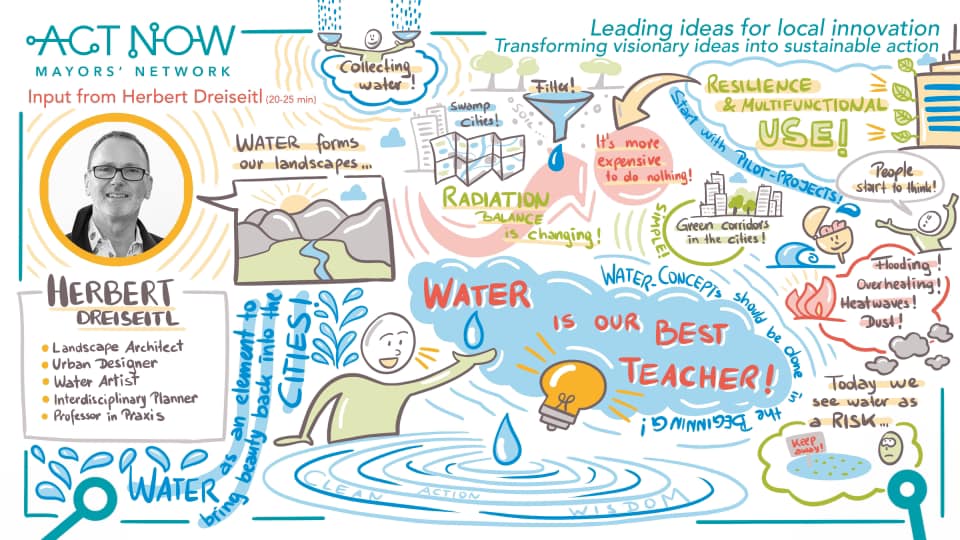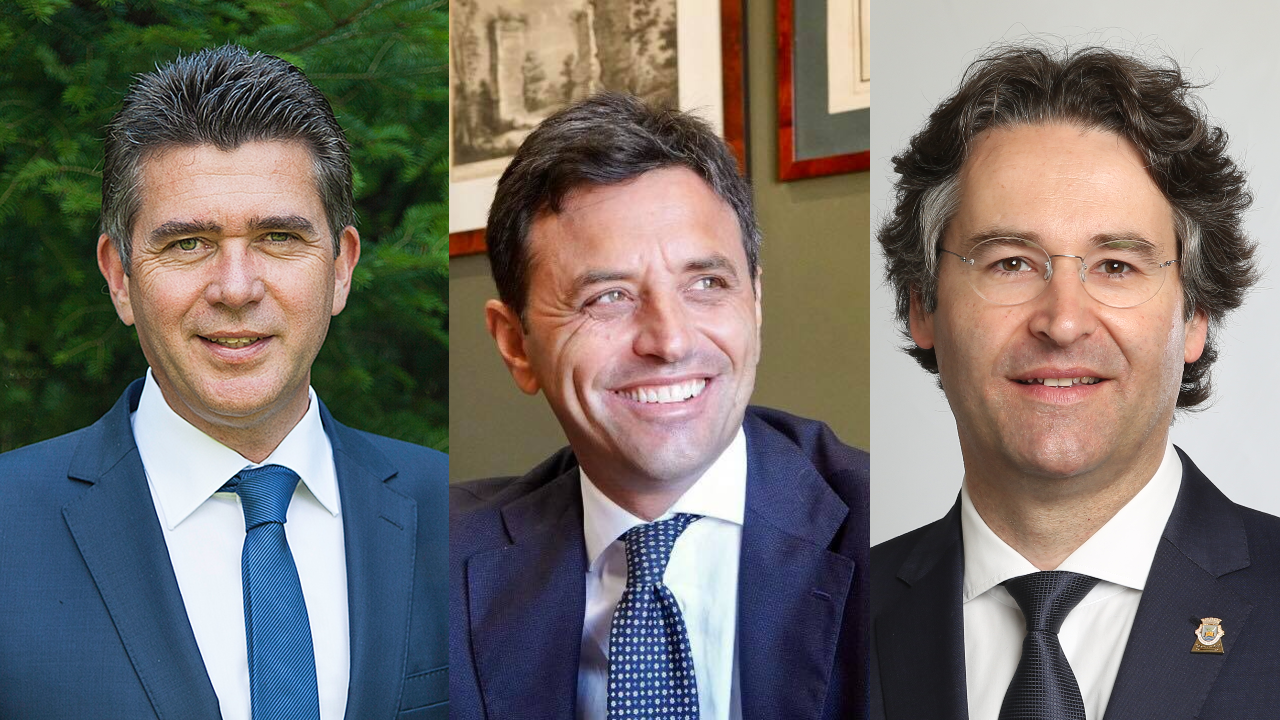“I always look at the Circular Economy like looking at a gem. There are many different facets to it, and it doesn’t shine unless you work with all of them together. So, the only way to have a Circular Economy is through a multi-stakeholder approach”, shared Cynthia Reynolds of Circular Regions in her webinar for our Mayors’ Network, “A Multi-Stakeholder Circular Economy – Supporting Environmental Quality, Economic Prosperity and Social Equity”, which was part of the series “Leading ideas for local innovation: Transforming visionary ideas into sustainable action”.
Cynthia Reynolds is a RSA Fellow, lifelong learner, mentor and serial entrepreneur passionate about how the combination of technology, innovative business models and the use of global networks and resources can create social, economic and environmental impact. She has a track record of turning ideas into action for positive change, thanks to her broad expertise in technology and focus on sustainability.
In this interview, we spoke with Cynthia Reynolds about the avenues through which Circular Regions support digital infrastructure and approaches to help both urban and rural communities make the shift from a linear to a circular economy.
What are the advantages of a Circular Economy? Why should municipalities aim to implement it?
Cynthia Reynolds: The Circular Economy has many advantages, as it is regenerative and restorative by design. It is able to support not only economic prosperity and environmental quality, but also social equity as well. It can benefit all of the stakeholders including the public, private and third sectors as well as individuals.
Research shows that circular economy does not lead to unemployment, but in fact, a scenario with higher circular economy measures will lead to a 2.5% increase in jobs by 2030 compared to a “business-as-usual” scenario.
Municipalities have a unique opportunity to deliver mitigation options in addition to national actions. Cutting consumption-based emissions will deliver wider benefits for a municipality and its residents. Individuals, businesses, NGOs and city governments all stand to gain if changes are delivered in the right way.
What steps are needed to create a Circular Economy across cities and regions?
Cynthia Reynolds: Identifying and connecting the ecosystem and supporting new collaborations and innovative business models is key. Mapping existing initiatives is vital and enabling the bottom-up solutions to provide data on the impacts, barriers and enablers can support decision makers to develop better policies and funding mechanisms for cross-sector ecosystem transformation.
Mapping initiatives that support: Sustainable production practices; Short mile distribution practices; Sustainable consumption patterns helps identify the stakeholders involved in these activities and possible linkages amongst them; and identify both urban and rural initiatives enabling regional collaborations and the replication of best practices for scaling impacts.
Mapping them would allow cities/regions to: Obtain a deeper understanding of circular economy-related initiatives; Identify those sectors where circular initiatives are taking place at all stakeholder levels; Learn from success and failure; Develop an understanding of what the circular transition means for each sector; and explore potential cross-sector synergies and their common features.
Implementing pilots with the digital infrastructure to support new markets for products and services can support increased visibility and the potential for cross-sector matchmaking. But none of this can be accomplished without a shared understanding of a holistic vision of the circular economy, to support collaboration.
The key element of Circular Regions is to work with system entrepreneurs, who understand the local circular economy ecosystem and work with the public sector. What is their concrete function and tasks?
Cynthia Reynolds: The role of Systems Entrepreneurs is to identify, connect and activate the ecosystem. These are Circular Economy experts (or those dedicated to expanding their knowledge of the Circular Economy) whom we provide the tools and resources, as well as a network to support their working with the public sector at local and regional levels; with the private sector alongside industry, small to medium sized enterprises as well as the startup scene; and with the third sector, such as the non-profits, community and grassroots organisations.
Concretely, they communicate with the stakeholders and facilitate a series of workshops in the programme to enable a shared intelligence to support ecosystem transformation. They use their networks to identify circular initiatives already underway, and gather the data utilising our methodology on the platform to understand the social, economic and environmental impact as well as the social, technological, market, cultural and regulatory barriers and enablers. We work closely with them to support local value creation.
What are the greatest challenges on the way to functioning Circular Economies?
Cynthia Reynolds: New approaches in how we use and share our resources and how we find solutions that function within the planetary boundaries requires innovation. Creating a better world takes partnership, collaboration, and a move from organisation-centric behaviours to mission-centric behaviours. Government, industries, civil society, and science increasingly recognise the need to work together to tackle the challenges of the modern world and bring about change for the common good. We need to foster relationships across these groups and help them collaborate.
In order to accelerate a sustainable transformation, new approaches are required to stimulate innovation and entrepreneurship to support cross-sector, cross-border and multi-stakeholder partnerships. Identifying circular initiatives will strengthen regional ecosystems and help speed the development of new connections in value chains.
If the logic of the Circular Economy is so compelling, why aren’t more companies, municipalities and regions doing it already?
Cynthia Reynolds: Advancing the Circular Economy requires the implementation and up-scaling of circular business models on a wide scale. Meeting circular economy goals (e.g. reuse, repair, recycling) requires innovation in the type of business model used (e.g. moving from sales to leasing), technological innovation (new technologies) and social innovation (new ways of interacting or connecting business and people). Implementing and up-scaling circular business models requires policy enablers that puts in place a supportive policy framework and a behaviour that leads to a change in consumption.
The barriers and enablers of the Circular Economy are complex, technological barriers are potentially the easiest to overcome, but the social, cultural, market and regulatory barriers are more challenging. One of the core missions of our organisation is to bridge the gap to provide decision makers with the knowledge they require based on the bottom-up input from companies and organisations to help support the development of better policies and economic incentives.
What are your favorite examples of circularity in action?
Cynthia Reynolds: Whilst there are many innovative circular solutions that are supporting economic prosperity and environmental quality, my favourite examples are the ones that support social equity as well. Internationally, there are hundreds of organisations (public, private and third sector) supporting access over ownership implementing socially innovative business models. In the process they are creating social impact such as: increased inclusion, new community spaces, reduced socio-economic pressure on individuals and families, increased local resilience, increased wellbeing and contacts among people. Prime examples include the Edinburgh Tool Library in the UK; La Remise, The Guelph and Toronto Tool Libraries in Canada, and even TingenesBibliotek, the Nordics first smart Library of Things in my own community at Nesodden in Norway.
These are the types of initiatives that can be networked, scaled and replicated in any urban or rural community. A fun fact, they are all powered by the same technology. Digital infrastructure and the networking of initiatives such as these are key to accelerating the transition to a circular economy that supports wellbeing within the planetary boundaries.
What changes in consumer behavior does moving toward a Circular Economy require? Are those happening?
Cynthia Reynolds: For any circular initiative to be successful it needs to be not only technically feasible, economically viable, environmentally sound but also socially acceptable. Societies must be able to integrate these innovations as part of their daily lives and therefore social acceptability becomes vital in achieving systemic change and societal transformation. These are all required in order for a circular initiative to be fully adopted by society to support the expected systemic and structural change.
Consumption habits and the required changes in choices made by consumers are shifting, but not fast enough. Policy and legislation are key, such as the EUs implementation of a ban on certain single use plastics which represent 70% of all marine litter in the EU. Legislation makes the shift from a consumer standpoint to be seamless, but educational and behaviour shift resources are required to push the needle. Consumer demand is also vital to force industry and businesses to shift their production toward more sustainable models.
What can be done to make the citizens experience/ feel the advantages of Circular Economies?
Cynthia Reynolds: Easy access to what you need, where and when you need it is something that everyone would like to experience. Reduced spending and socio-economic pressure will benefit citizens at all economic levels.
Innovative new business models and services provided by both the private and public sector are moving in this direction. A concrete example that any family can relate to is having access to sports and recreation equipment for children who outgrow their gear with each change of the season. We are seeing more and more sports gear libraries enabling this. An additional benefit is how this teaches the next generation that having access to something vs owning it is the smart thing to do for the environment, and it also helps remove the socio-economic stigma often associated with buying second hand. We see this also emerging with childrens clothing & gear such as strollers, playpens, highchairs etc. As these services emerge, so do local jobs in repair and refurbishment.
Policies such as reduced VAT on repairs and circular products and services also lower the threshold for citizens to participate in the repair and reuse aspects of the circular economy. Supporting the transition to a circular economy can make any community a better place to work and live.
If you were Mayor, which concrete measures would you implement in your city?
Cynthia Reynolds: As per the recommendations from the OECDs Circular Economy in Cities and Regions Programme: as Mayor, I would support the development of an initiative to collect data on existing circular economy-related initiatives, such as projects, businesses, programmes, plans and roadmaps in various sectors (e.g. food, waste, water, transport, etc) to identify the stakeholders involved in these activities and possible linkages amongst them.
The mapping process would allow the city to obtain deeper understanding of circular economy-related initiatives; identifying those sectors where circular initiatives are taking place at all stakeholder levels; develop an understanding of what the circular transition means for each sector; and explore potential cross-sector synergies and their common features.
The municipality can use the results of the project as a basis to enable pilots to speed a transition to new circular and sustainable operations and practices throughout all sectors by integrating the digital infrastructure to support the optimisation of asset utilisation and development of new cross-sector markets for secondary materials; as impact can be better realised in conjunction with digitalisation.
In order to support my constituency, I would endeavour to connect with other municipalities regionally to identify both urban and rural initiatives enabling regional collaborations and the replication of best practices for scaling impacts, and aim to connect with international learning networks such as the ACT NOW Mayors Network.


